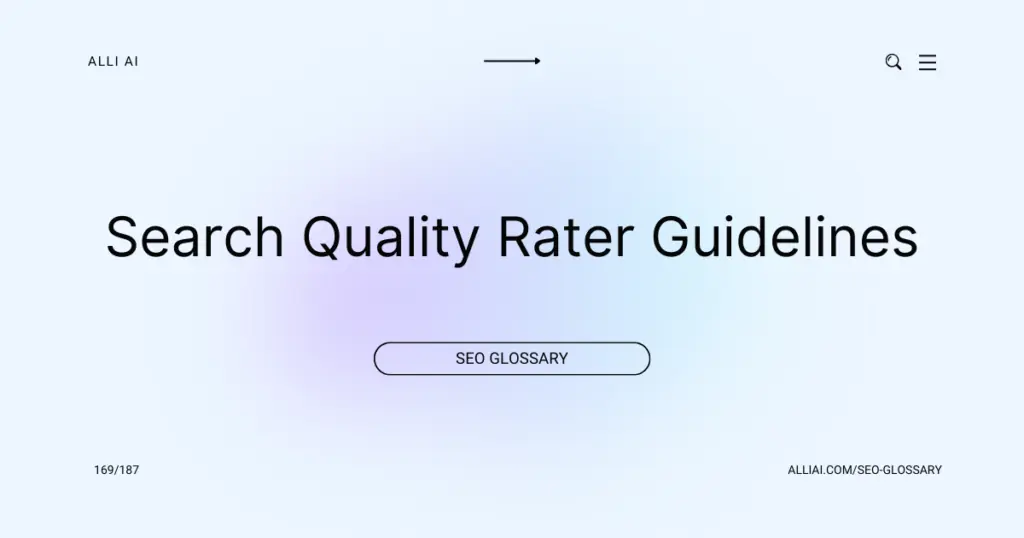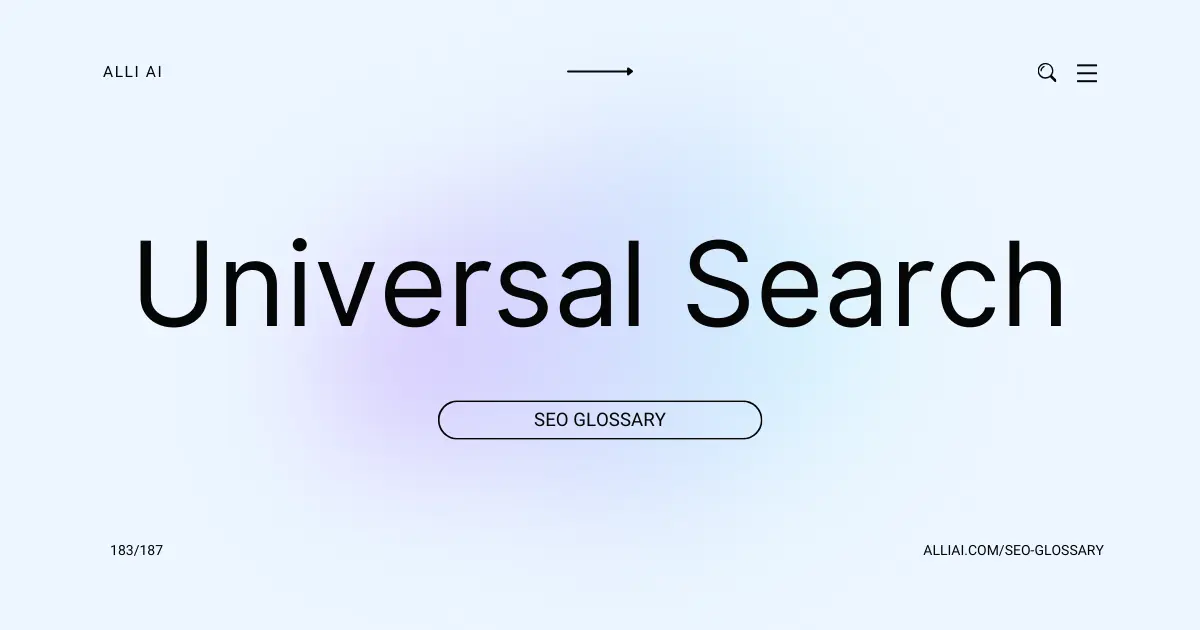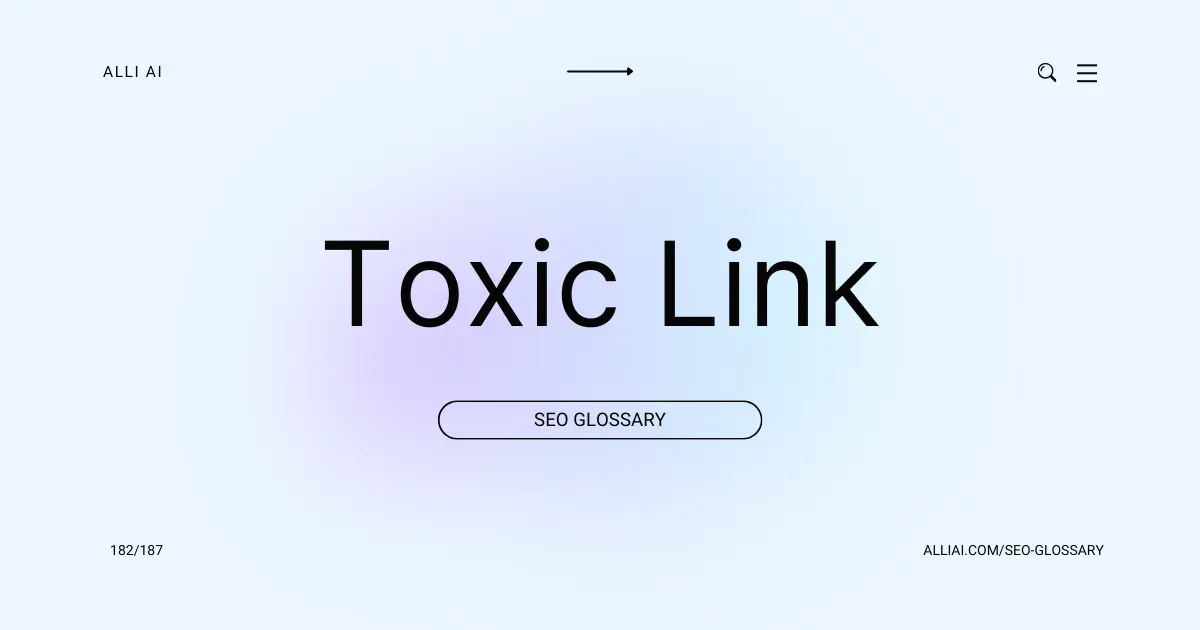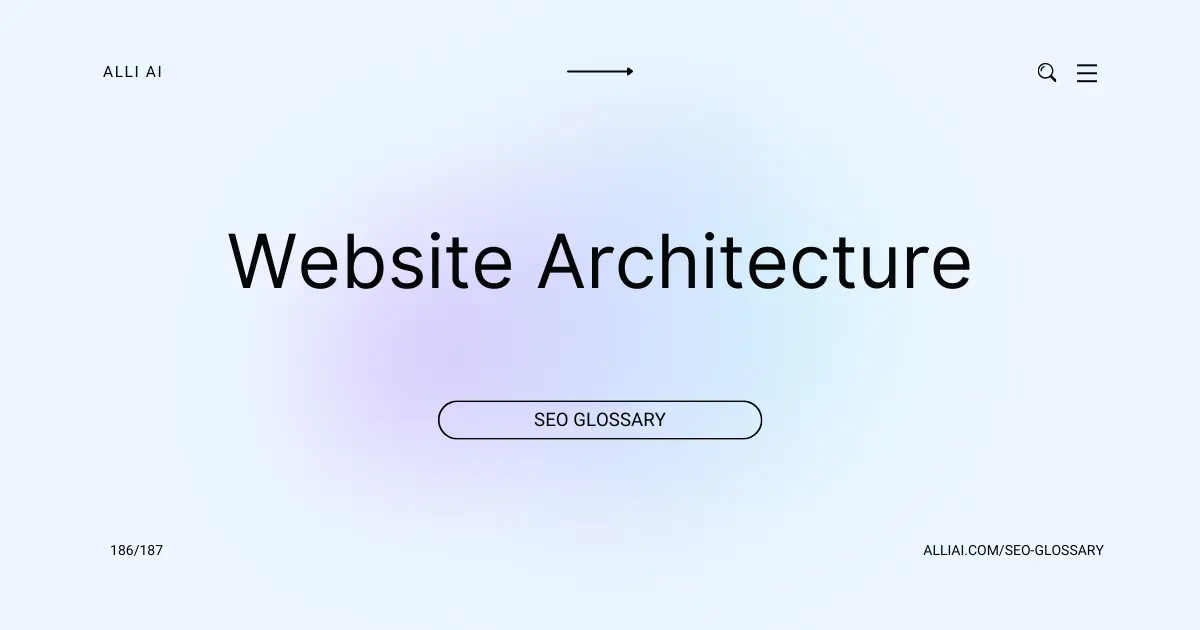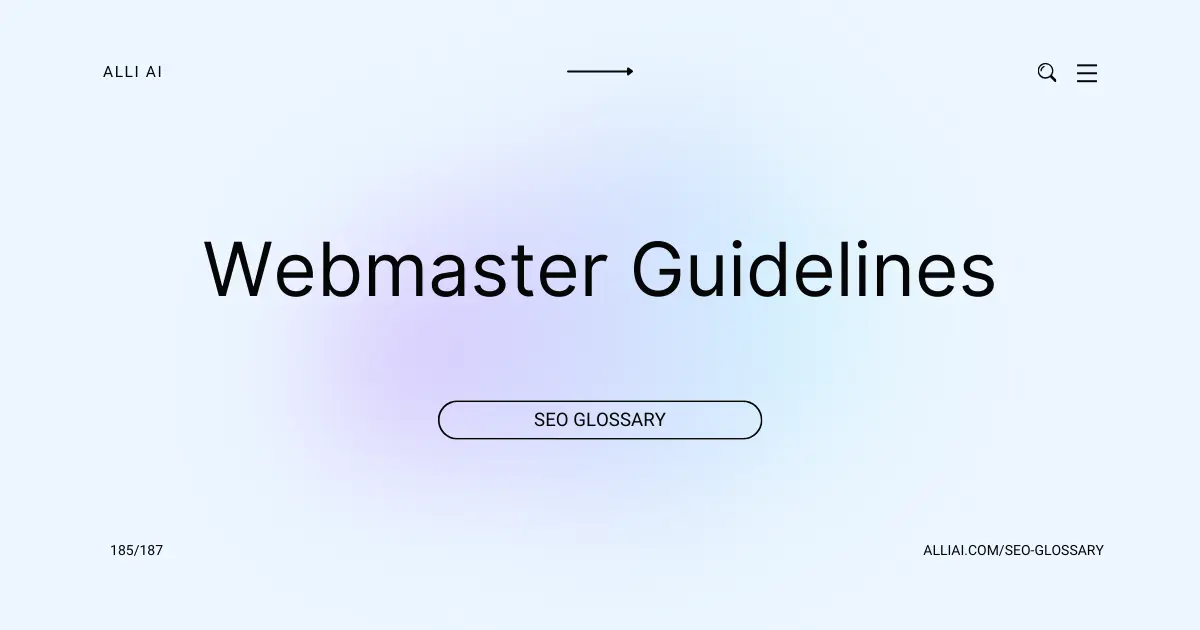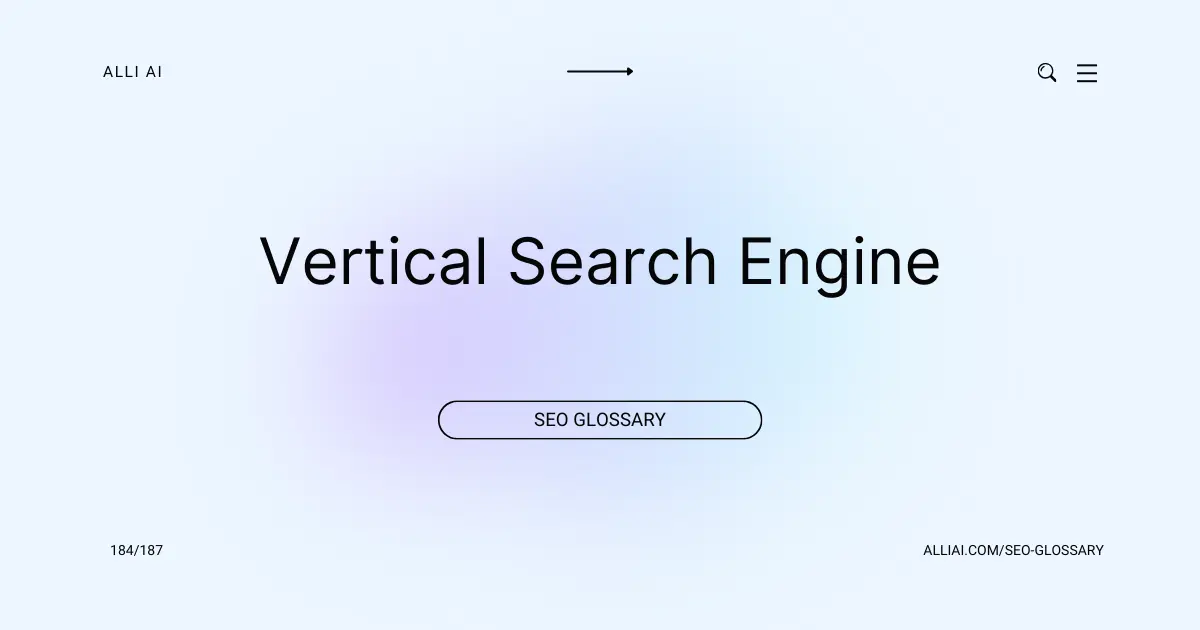What Does Search Quality Rater Guidelines (SQRG) Mean?
The Search Quality Rater Guidelines (SQRG) are instructions created by Google to help human reviewers assess the quality and relevance of websites and web pages. These guidelines aim to ensure that search results are useful, accurate, and trustworthy for users. The feedback from these reviewers is used by Google to improve its search algorithms, ensuring they deliver high-quality search results.
Where Does Search Quality Rater Guidelines (SQRG) Fit Into The Broader SEO Landscape?
Search Quality Rater Guidelines (SQRG) serve as a reference for human raters hired by Google to evaluate the quality of search results. These guidelines outline what constitutes a high-quality site versus a low-quality site, focusing on factors such as expertise, authoritativeness, and trustworthiness (E-A-T) as well as page quality and content quality. SEO professionals use insights from these guidelines to optimize websites to align better with the factors that Google considers important for quality. This can help improve their site’s ranking in search results, as it is believed that the principles outlined in the SQRG influence Google’s algorithm updates and modifications. Thus, SQRG forms a basis for understanding how Google assesses website quality and guides SEO strategies accordingly.
Real Life Analogies or Metaphors to Explain Search Quality Rater Guidelines (SQRG)
1. Cookbook for Culinary Judges: Just as a cookbook provides recipes to guide chefs on how to prepare specific dishes, the Search Quality Rater Guidelines provide a detailed set of instructions to help raters evaluate and score the ‘flavor’ (quality) of webpages. The guidelines ensure each ‘judge’ (rater) knows what constitutes a delicious dish (high-quality page) versus a burnt one (low-quality page).
2. Rulebook in a Sports Game: Imagine the SQRG as the rulebook in a sports game, where the ‘players’ are web pages. The guidelines act as the referee’s manual, explaining how to score players’ performances accurately. It’s essential for keeping the game fair and ensuring that the best players (web pages) get the recognition they deserve.
3. Gardening Guide: Think of the SQRG as a gardening guide that helps gardeners (raters) decide which plants (websites) are healthy, which are weeds (spammy or deceptive sites), and how to nurture the garden to help it flourish. This guide ensures that the garden remains beautiful and useful to those who visit it.
4. Art Critic’s Criteria: Similar to how an art critic uses certain standards to evaluate art, the SQRG provides raters with criteria to assess the beauty and effectiveness of websites. The guidelines help determine which pieces (websites) are masterpieces, which are passable, and which are failures.
5. Music Composition Sheet: Just as a composer follows a sheet of music to create symphonies, raters use the SQRG to harmonize their evaluations. This ensures that each note (website element) is assessed correctly to produce a melody (search result) that resonates well with the audience (users).
How the Search Quality Rater Guidelines (SQRG) Functions or is Implemented?
1. Purpose: The SQRG are used by human raters to evaluate and score the quality of websites and webpages. The ratings do not directly impact search rankings but are used to inform and improve Google’s search algorithms.
2. YMYL Pages: “Your Money or Your Life” pages get special attention in the guidelines, as they impact users’ financial stability, health, safety, or wellbeing. These pages are held to higher standards.
3. E-A-T: Expertise, Authoritativeness, and Trustworthiness are the major metrics used in the guidelines to assess page quality. High-quality content must be created by knowledgeable authors and presented on trustworthy sites.
4. Rating Tasks: Raters perform various tasks including assessing the needs met by pages, evaluating the E-A-T of pages, and rating the mobile usability. They use a scale from Lowest, Low, Medium, High to Highest to rate page quality.
5. Using the Guidelines: Raters refer to the guidelines to ensure uniformity in their evaluations. They mark examples and give scores based on predefined criteria detailed in the guidelines.
6. Feedback Mechanism: Raters’ assessments are used to provide feedback to Google’s algorithm developers, aiding in refining search algorithms to better match user intent and ensure high-quality search results.
7. Updates and Revisions: The SQRG are regularly updated to align with evolving web standards and user expectations, ensuring the guidelines remain relevant and effectively guide raters.
Impact Search Quality Rater Guidelines (SQRG) has on SEO
Search Quality Rater Guidelines (SQRG) do not directly impact a website’s SEO performance or rankings as they are not integrated into the algorithm. Instead, they are used by human raters to evaluate the quality of search results. These evaluations are used by engineers to refine Google’s algorithms, aiming to better align search outcomes with user expectations.
However, SQRG indirectly influences SEO through its focus on key aspects such as E-A-T (Expertise, Authoritativeness, Trustworthiness) and YMYL (Your Money Your Life) topics. Websites demonstrating high levels in E-A-T are likely to be favored by Google’s algorithms, especially for YMYL subjects.
From a user experience standpoint, adhering to these guidelines helps websites to provide content that meets users’ needs for credibility and relevancy, which in turn promotes positive user engagement signals such as lower bounce rates and longer dwell times, aspects that algorithms consider when ranking sites. By improving content in line with SQRG, sites can potentially improve their visibility in search results and provide a better user experience.
SEO Best Practices For Search Quality Rater Guidelines (SQRG)
1. Understand User Intent: Identify the primary, secondary, and tertiary intents of search queries related to your content. Adjust content to directly address these intents.
2. Demonstrate E-A-T (Expertise, Authoritativeness, Trustworthiness):
– Expertise: Highlight qualifications, certifications, or relevant experiences of content creators.
– Authoritativeness: Gain external backlinks from reputable sites, and contribute as guest experts on respected platforms.
– Trustworthiness: Include clear contact information, terms and conditions, privacy policies, and secure site protocols (HTTPS).
3. Content Quality and Amount:
– Create thorough content that comprehensively addresses the topic.
– Ensure the content is factually accurate, well-researched, and regularly updated.
4. Page Functionalities:
– Ensure the website loads quickly and efficiently on all devices.
– Make navigation intuitive and content easily accessible.
– Optimize for mobile responsiveness.
5. User Experience:
– Design pages with a clear hierarchy and text that is easy to read.
– Use high-quality images and multimedia effectively to support content.
– Eliminate disruptive ads or pop-ups that might hinder user experience.
6. Reputation Research:
– Monitor and manage online reputation actively.
– Encourage positive reviews and address negative feedback appropriately.
– Showcase awards, recognitions, and testimonials.
7. Comparative Analysis:
– Regularly compare your content with your competitors’.
– Identify gaps and opportunities for improvement.
– Implement strategies based on insights gathered from competitors.
8. Optimize for Keywords:
– Naturally integrate primary and secondary keywords within the content.
– Use keywords in headings, subheadings, meta titles, and descriptions to improve relevance.
9. Update Content Regularly:
– Keep content up-to-date with the latest information and statistics.
– Regularly review and revise outdated content.
10. Accessibility:
– Ensure the website is accessible to users with disabilities by following WCAG guidelines.
– Use alt text for images, accessible navigation, and consider readability for all users.
11. Performance Monitoring:
– Utilize tools like Google Analytics and Google Search Console to track performance and user engagement.
– Identify areas of improvement based on user behavior and site metrics.
12. Feedback Incorporation:
– Implement mechanisms for user feedback.
– Analyze feedback for insights into user satisfaction and areas for enhancement.
Implement these steps methodically to align your website’s strengths with the criteria emphasized in the Search Quality Rater Guidelines, significantly optimizing your site’s potential to perform well in search engine results.
Common Mistakes To Avoid
1. Low-Quality Content: Publishing content that lacks depth, is copied, or does not offer any real value to the reader can lead to poor evaluations under the SQRG. Ensure all content is original, well-researched, and provides substantial value.
2. Lack of Expertise, Authoritativeness, and Trustworthiness (E-A-T): Failing to display signals of trustworthiness such as clear author bylines with credible biographies, citations, and factual accuracy. Enhance E-A-T by featuring qualified authors and reputable sources, and by providing accurate, truthful content consistently.
3. Poor User Experience (UX): Websites with difficult navigation, intrusive ads, or slow load times detract from user experience, which is a significant factor in SQRGs. Optimize site structure, improve load speeds, and ensure mobile responsiveness.
4. Misleading Content: Titles or headings that promise content not delivered by the text (clickbait) can result in penalties. Always align headings and content accurately to manage user expectations correctly.
5. Neglecting YMYL Content Standards: For Your Money or Your Life (YMYL) topics, which affect health, finance, or safety, higher standards of scrutiny apply. Secure expert contribution or review, and rigorously fact-check and reference authoritative sources.
6. Inadequate Contact Information and Customer Service: Lack of visible and accessible contact details can impact trust ratings. Include detailed contact information and robust customer service functionalities.
7. Spammy Content: Overusing keywords, participating in link schemes, or implementing aggressive monetization tactics can flag a site as spammy. Focus on user intent, natural language, and ethical SEO practices.
8. Ignoring Multimodal Content Quality: Not optimizing and captioning non-text elements like images and videos or poor quality of these resources might lower the quality rating. Use high-quality visuals, provide alt-texts, and ensure all multimedia adds value to the content.
9. Not Updating Content: Outdated information, especially in rapidly changing fields, can lead to misinformation and lower quality scores. Regularly update content to keep it current and relevant.
10. Non-compliance with Local and Cultural Context: Failing to tailor content to the local or cultural context of the target audience affects relevance and effectiveness, important aspects of SQRGs. Customize content to reflect the specific needs and cultural nuances of each market.
Each of these points helps align website practices with Google’s SQRG, aiming for the best possible user experience and content quality, crucial for a strong organic search presence.
